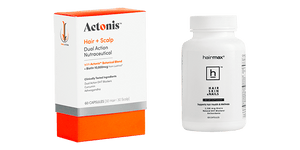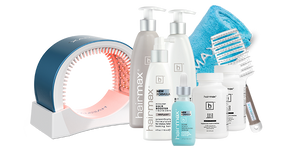Many times you will see a product for treating male pattern baldness that claim that it is effective and safe based on ‘clinical studies’. What you don’t know though, is what do they mean by clinical studies?

In order for any study to claim effectiveness for male pattern baldness has to be conducted under what are called Good Clinical Practices (GCP). GCP guidelines include protection of human rights as a subject in clinical trial. It also provides assurance of the safety and efficacy of the newly developed compounds. GCP include standards on how clinical trials should be conducted, define the roles and responsibilities of clinical trial sponsors, clinical research investigators, and monitors of the trial.
The clinical trials conducted for the HairMax LaserComb for treating male pattern baldness, rigorously followed GCP guidelines. However, there were many other vital components designed into the studies that assured that the trials were conducted in the most rigorous manner as listed below.
- Pre-Specified Study Efficacy Endpoints – The protocol for the studies on male pattern baldness must concisely state the primary, secondary, and tertiary endpoint objectives for the study. For example, in the HairMax LaserComb studies, the primary effectiveness endpoint was concisely stated, i.e., “the change in terminal hair counts at 16 and 26 weeks compared to baseline for each subject with male pattern baldness, for both the treatment and control (placebo) arms”. This can never be changed once the protocol is approved.
- Study Sites – The protocols for conduction of the studies for male pattern baldness were identical, but specified that they were to be conducted at multiple study sites. This assures that the results can be duplicated no matter where the study is conducted, to eliminate any study site bias.
- Number of Subjects – This is a major key component when conducting clinical studies to assure that there was a sufficient number of people in the study that will conclusively prove the efficacy and safety of the device for treating male pattern baldness. Many so-called clinical studies do not have the ‘power’ of a proper number of subjects which will assure that the results are predictable. The two studies recently conducted with the HairMax LaserComb for the treatment of male pattern baldness, had 103 subjects, which provided in statistical terms, 80% ‘power’. This means that the number of subjects in the studies were ‘robust’ and would therefore conclusively prove efficacy and safety in treating male pattern baldness. (Some studies from other companies utilized a small number of subjects, and came to conclusions which do not definitively prove or are biased in proving that the device studied is effective and safe for treating male pattern baldness.)
- Placebo Controlled – It is important to assure that the studies are conducted with an active device and a ‘placebo’, or inactive device in order to show that the active works statistically better than the placebo device in treating male pattern baldness.
- Blinding – This is another vital component of the HairMax LaserComb studies, that assured that there were no biases in the conduction of the study. This is called ‘double-blinding’, whereby the researcher conducting the study, the subjects, and the evaluator of the results for the treatment of male pattern baldness, do not know the identity of the device used for treatment. In this manner, there can be no bias in passing out the devices or in the evaluation of the results..
- Inclusion and Exclusion Criteria – This part of the study makes sure that people are included that are diagnosed with male pattern baldness, and assure that others that have medical conditions, prior treatment, or present treatment, etc. are excluded so as not to interfere or unduly impact the study results.
- Description of Scalp Study Sites –An exhaustive description of how the primary end point objective will be achieved, such as hair counts. As an example, the protocol for the HairMax LaserComb for treating male pattern baldness, described the target site, the type and timing of images to be taken, the need for tattooing to assure analysis of the same area at each visit, and many other details to assure an unbiased and predictable analysis of the results.
- Publication of Results – Publication of the results of the clinical study in a peer-reviewed (and therefore unbiased medical journal), adds authenticity and credibility to the study. The 2006 clinical study abstract that led to the landmark 2007 FDA Clearance for the treatment of male pattern baldness, can be viewed at www.pubmed.gov [put in ‘HairMax’ in the subject line]).
In conclusion, deciding which laser device to purchase and use for treating male pattern baldness is an important decision in order to assure that the device is effective and safe. So, when you read that a laser device for the treatment of male pattern baldness is ‘clinically proven’, be sure to 1) view the results of their clinical study, and 2) be sure that it was conducted with all of the attributes as listed above.
You will find that the only device on the market that adhered to these study guidelines AND had sufficient power to prove conclusively and predictably that it was safe and effective, was the HairMax LaserComb for the treatment of male pattern baldness.









